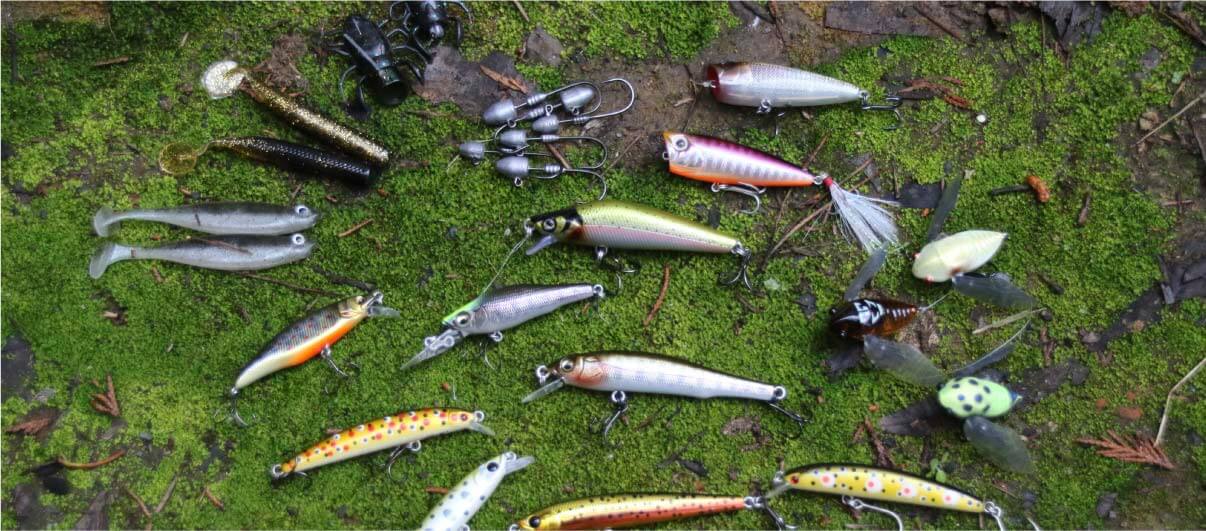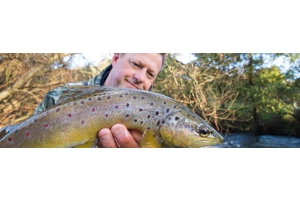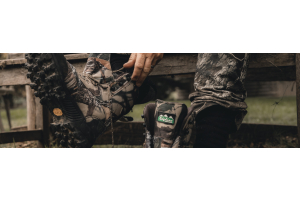
Trout Fishing - Tips From The Pros
Make this your best Trout Season yet!
Renowned Fishing Journalist and photographer Jarrod Day of Spooled Magazine shares his wisdom on lure fishing when it comes to the trout season.
@jarrodday_outdoors @spooledmagazine
Luring River Trout

Trout can be caught using many different methods, with one of the most popular being lure fishing.
Lures for trout are available in a wide range of options, from soft plastics, spinners and spoons, diving hard body lures and small surface lures.
SOFT PLASTICS
As far as mimicking a live baitfish, soft plastics are the number one style of lure to use, Available in a seemingly endless range of colours, lengths and styles, it can be daunting to choose just one, but as a rule of thumb, those designs that resemble the natural food ofa trout for where you are fishing tend to work best. These include bugs, minnows and yabby imitations to name a few.
SPINNERS AND SPOONS
Even with the introduction of modern hard ABS plastic lures, spinners and spoons remain a top choice for trout fishing and have been for decades.
Spinners and spoons are lures that move just below the water's surface when cast and retrieved quickly. However, because these lures are available in a range of weights, after the cast is made and the lure hits the water's surface, they can be left in free spool to sink for few seconds before retrieving. This will have them retrieved back on a slight angle from their beginning depth back along the trajectory line towards the fishing rod's tip.
HARD BODY LURES
DEEP DIVING lures are those with a large bib on the front ofthe lure. The size and angle of the bib determines the depth in which the lure will dive. This is caused by the water pressure bestowed onto the bib, causing it to dive. The angle of the bib also determines the swimming action for that particular lure. In most cases, hard body lures will have a tight wiggle action. Deep diving hard boy lures are ideal when fishing deep pools.
SHALLOW DIVING lures are those with a smaller bib on the front ofthe lure. These lures tend to run much shallower than their deep diving cousins and tend to dive to depths ranging from 30cm to a metre are ideal when fishing shallow riffles or where a deeper diving lure will constantly become snagged on the bottom debris.
SURFACE LURES
Top water fishing for trout really gets the heart pumping. Mainly because you simply cast your lure into open water in a river or stream and once it lands on the water's surface, you can begin the slow but steady retrieve. If you are using a bug, or cicada style of surface lure, you will notice during the retrieve, the wings cause the cicada to "crawl" on the water's surface as though it is a live cicada that has landed on the water and is trying to get back to land to avoid drowning. This is very tempting to a nearby trout! During the summer months, trout are on the lookout for cicadas in some rivers and often swim about listening for the commotion on the water's surface. Once found, they attack with force.
Each luring option has its specific requirements and below is a list of keep points to help you on your way to trout luring success.
Casting accuracy is paramount, cast to the edges Of the river banks, behind rocks or fallen timber.

- Always wade/walk and cast upstream. Trout always face forward into the current.
- Take your time. Rushing will only cause you to spook fish, rather than catch them.
- Use the correct lure for the waterway your fishing I.E: Spinner for shallow water, a deep diving hard body for deep pools or a soft plastic in fast water.
- Be flexible to adapt to the river conditions. Always take a range of lures with you.

Want some more tips? Check out the latest issue of Spooled Magazine for more advice on luring trout season by season from Jarrod Day.






